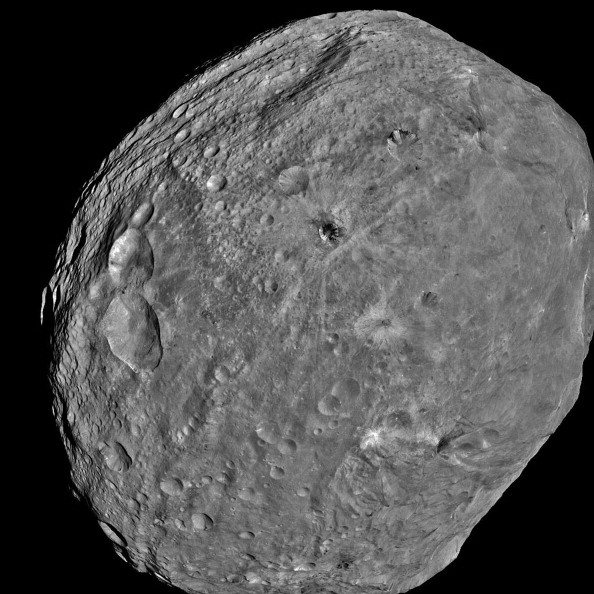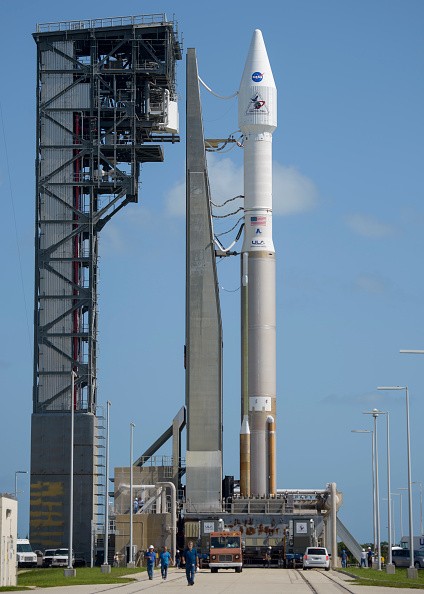NASA's OSIRIS-REx Mission found out more about the asteroid named Bennu. The spacecraft has been exploring the asteroid for two years now and have collected samples of rocks and dusts for research. It travelled 200-million miles to reach Bennu from Earth and touched the surface of the space rock on October 20, 2020.
During its mission, the testing device of the spacecraft send shots of nitrogen, whirling rocks and dusts that it were gathered in the sample-collection tool. However, researchers were caught off-guard when the move turned out to have yielded so much fabric that rock and dusts were propping the sample-collection instrument open, allowing valuable alien materials to spill into space.
Fortunately, reasearchers manage to stow the test losing some sample, but that wasn't the final of the stuns. Recently, College of Colorado analysts concluded, based on information Osiris-Rex has collected within the two long times it's been circling Bennu, that the space rock is likely empty.
Daniel Scheeres who is a professor from the university's Department of Aerospace Engineering Sciences and led the research concluded that there are blank spaces on the center, within which could fit a number of football fields.
The asteroid Bennu spinning close to its Death
Whereas Osiris-Rex has been circling Bennu, the test has measured how much the asteroid's gravity pulled on it. By following their movements, mission directors form calculations around the quality of Bennu's gravity. At the same time, Bennu was throwing marble-sized bits of rock away from its surface.
Since gravity comes from mass, these two sets of information permitted Scheeres' group to calculate how the material is conveyed through the interior of the space rock.
Their discoveries was distributed within the diary Science Progresses on October 8. Recently, OSIRIS-REx's brief landing appear that it's distant from their expected calculations in terms of transporting from the lofting site.
The constrain of the Bennu's turning appears to be pushing its fabric outward towards the surface. A few of the most slender parts of the space rock are at its bulging equator.
"You could imagine maybe in a million years or less, the whole thing flying apart," said Daniel Scheeres according to The Business Insider.

Read Also: NASA Appeals Against 5G Satellite's Mega Constellation Plan Amid 'Catastrophic Collision' Risk
The OSIRIS-REx Collection of Samples
OSIRIS-REx expands its mechanical inspecting arm - the Touch-And-Go Sample Acquisition Mechanism (TAGSAM) - from its collapsed capacity position out to the test collection position. This setup moreover places the spacecraft's center of gravity specifically over the TAGSAM collector head, which is the portion of the shuttle that will contact Bennu's surface amid the test collection occasion. The spacecraft's two sun based boards at that point move into a "Y-wing" arrangement over the spacecraft's body, which positions them securely up and absent from the asteroid's surface amid touch down.
The spacecraft is equipped with collecting at least 60 grams or 2 oz. of Bennu's surface materials to be delivered back to Earth. It is the largest sample collection since the Apollo program - and the mission created two strategies to confirm that this test collection happened as reported by NASA.

It is also equipped with the Natural Feature Tracking (NFT) navigation system. The spacecraft started its collection of navigation images about 90 minutes after its orbit departure. It then compares these real-time pictures to an onboard picture catalog, utilizing recognized surface highlights to make sure that it's on the correct course toward the location.
Related Article: NASA Flaunts Upclose Images of Asteroid Bennu But Baffled Over Dark 'Depression'
ⓒ 2025 TECHTIMES.com All rights reserved. Do not reproduce without permission.




